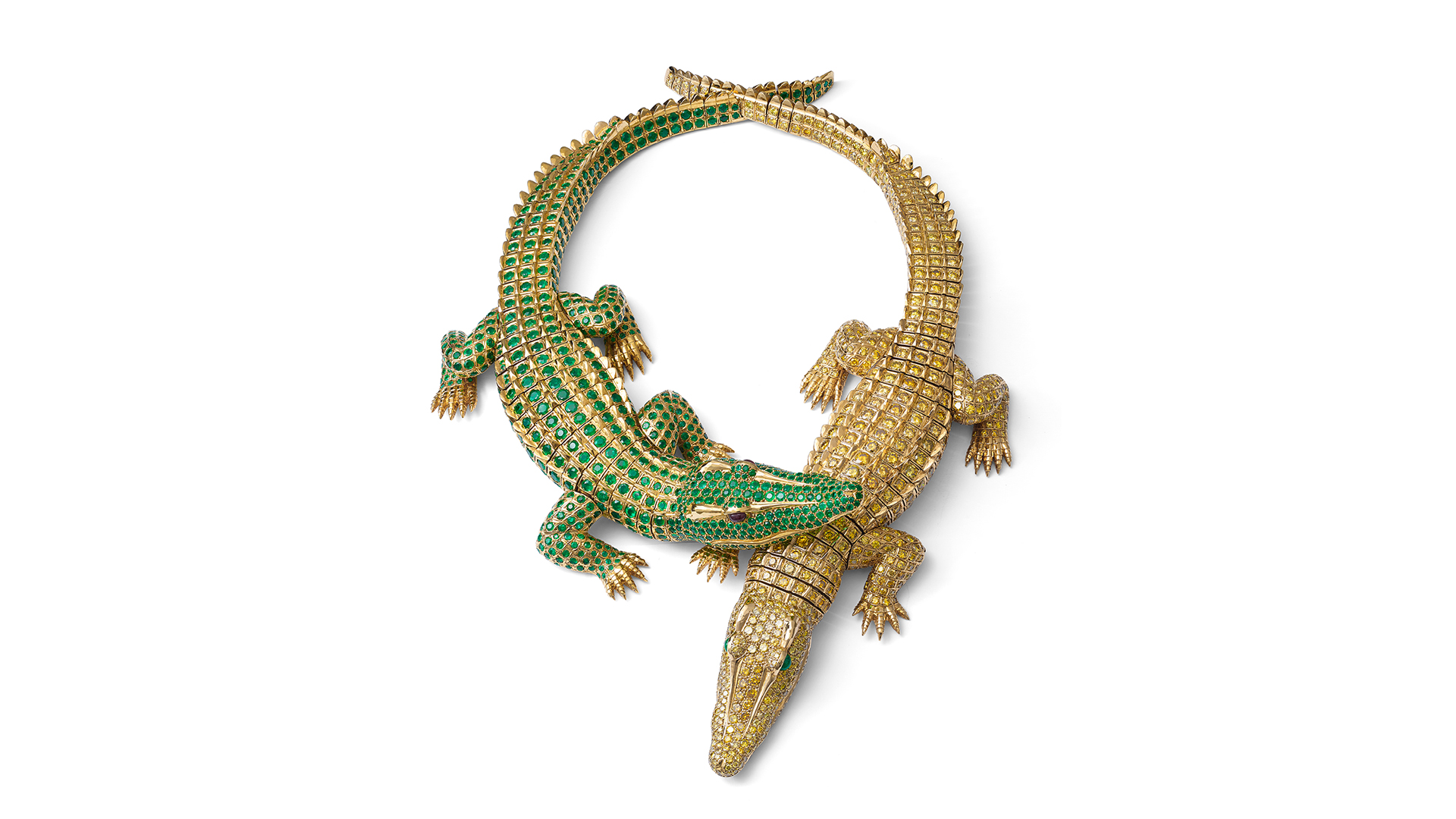
[ad_1]
What does the legendary Star of India — a 563-carat star sapphire the size of a golf ball — have in common with a 35-million-year-old petrified redwood slab; a massive cluster of sword-like crystals that looks like it came from “Game of Thrones;” and a 5-ton (4.5-metric ton) stone pillar that can “sing?”
You can see all of them, along with 5,000 other amazing stones, in the newly renovated Mignone Hall of Gems and Minerals at the American Museum of Natural History (AMNH) in New York City, which is reopening after a four-year closure on Saturday (June 12). There, one-of-a-kind precious gems appear alongside odd-looking rocks — some of which date to billions of years ago — that have been uniquely warped and twisted by extreme temperatures and pressures.
Individually and together, these objects tell a story of the diverse geologic processes that shape minerals on Earth’s surface and deep inside our planet, beginning when the world was young and continuing to this day, museum representatives told Live Science.
Related: 13 mysterious and cursed gemstones
The Star of India, which formed about a billion years ago, was discovered in Sri Lanka in the 18th century. It is one of the best-known gems in the world, in part because it was famously and brazenly stolen from AMNH in 1964, along with several more of the museum’s prized stones, by a pair of thieves named Jack “Murf the Surf” Murphy and Allan Kuhn, Smithsonian reported in 2014, on the heist’s 50th anniversary. (The one-of-a-kind sapphire was recovered and went back on display in 1965).
But there are many more sapphires on display in the museum alongside the Star of India, and they glow in a vibrant rainbow of colors that stem from the individual gems’ chemical composition and formation, said Lauri Halderman, vice president of the AMNH exhibition department.
The exhibit will also display two towering amethyst geodes that are brimming with purple quartz crystals. They formed about 135 million years ago from mineral deposits carried by geothermal heated water, and are among the biggest in the world: One measures around 9 feet (2.7 meters) high and weighs about 11,000 pounds (5,000 kilograms), and the other is around 12 feet (3.6 m) high and weighs 9,040 pounds (4,100 kg).
(opens in new tab)
Another massive slab is the so-called Singing Stone, a nearly 5-ton pillar of blue azurite and green malachite ore that was exhibited at the 1893 World’s Fair in Chicago. It came to the museum after the fair closed and earned its name because changes in humidity in the exhibit hall (before it was climate-controlled) caused parts of the ore to vibrate and “sing,” according to AMNH.
Beautiful creatures
In a temporary exhibit, the hall shines a spotlight on high-end gems that over the last 150 years were incorporated into jewelry resembling wildlife. “Beautiful Creatures,” curated by jewelry historian Marion Fasel, features more than 100 gem-studded animals of the land, air and water, including birds, insects, fish, lizards and spiders. An ornate crocodile necklace holds 60.02 carats of yellow diamonds and 66.86 carats of emeralds, and a sinuous snake necklace is set with 178.21 carats of diamonds, according to AMNH.

(opens in new tab)
Minerals have been part of Earth’s evolution since the first elements formed grains of dust that collected around our sun and began smashing together to form planets, said hall curator George Harlow, a curator in the Department of Earth and Planetary Sciences at AMNH, and a professor in the museum’s Richard Gilder Graduate School. After Earth differentiated into a planet with a core, mantle and crust, “things like sodium, potassium and lithium started coming up to the surface and becoming more concentrated,” Harlow explained. “Once they reach a certain concentration, then you get a new mineral.” Over billions of years, water and oxygen’s appearance on Earth gave rise to more minerals, and pressure from plate tectonics created still more, Harlow said.
Some of the minerals in the hall come from places that you might not expect, such as the 9-lb. (4-kg) Subway Garnet, a deep-purple almandine garnet that surfaced in New York City in 1885 during sewer construction on 35th Street. Other specimens have unusual and bizarre shapes or colors, such as grape agate, which looks like a cluster of purple grapes; pale-yellow gypsum, which resembles a messy pile of potato chips; and a slab from a zinc ore mine in Sterling Hill, New Jersey, which glows in brilliant stripes of neon red and green under shortwave ultraviolet light.
“Everywhere you look there are dazzling, beautifully displayed mineral and gem specimens,” Halderman said. “When I look at the specimens they make me curious — how do you find it, how did it form, what do we know about it? Some of the stories are human, some of the stories are scientific — we tried to bring all those stories to the foreground.”
AMNH’s Mignone Hall of Gems and Minerals and the temporary exhibit “Beautiful Creatures” open to the public on June 12. “Beautiful Creatures” will be on view through September 19.
Originally published on Live Science.
[ad_2]
Source_link